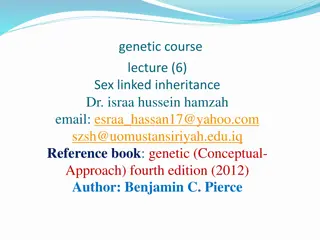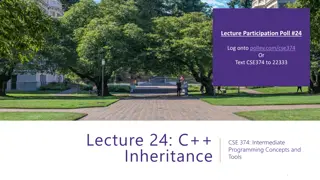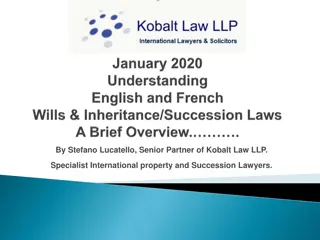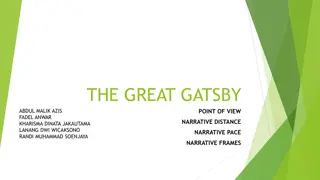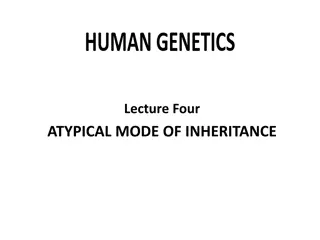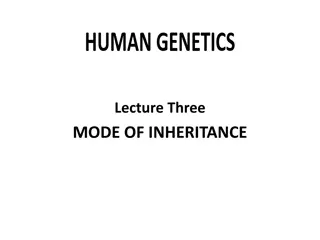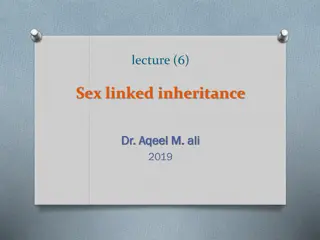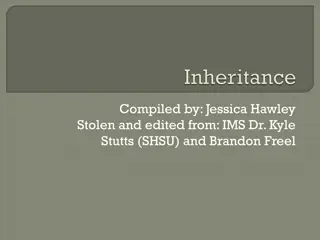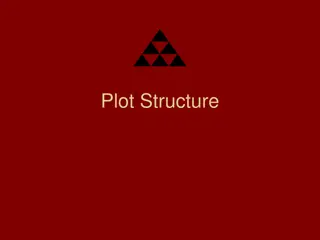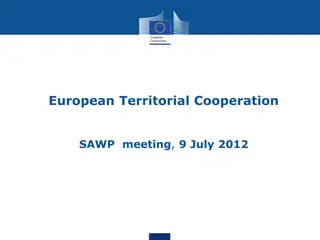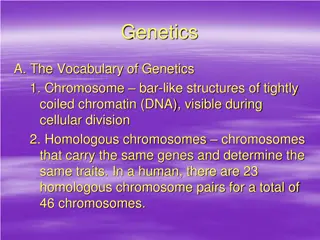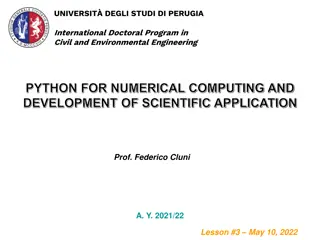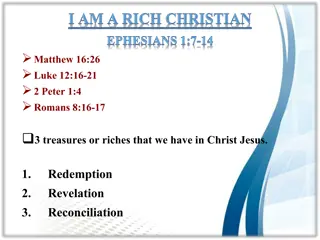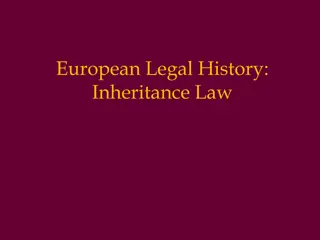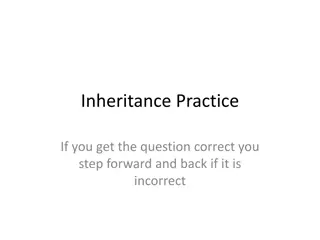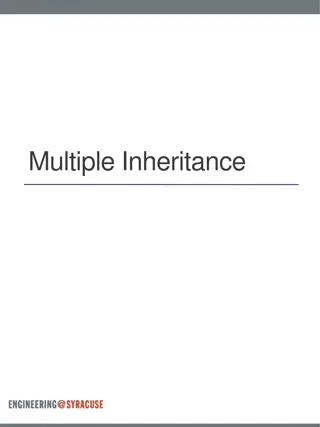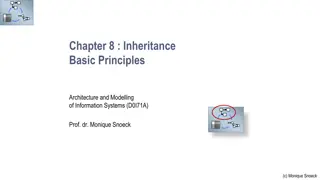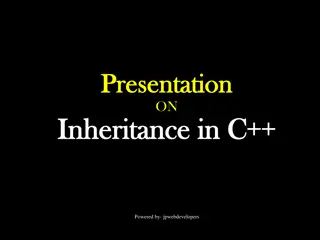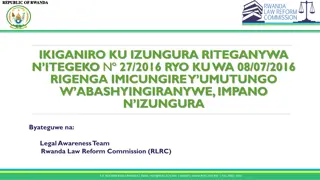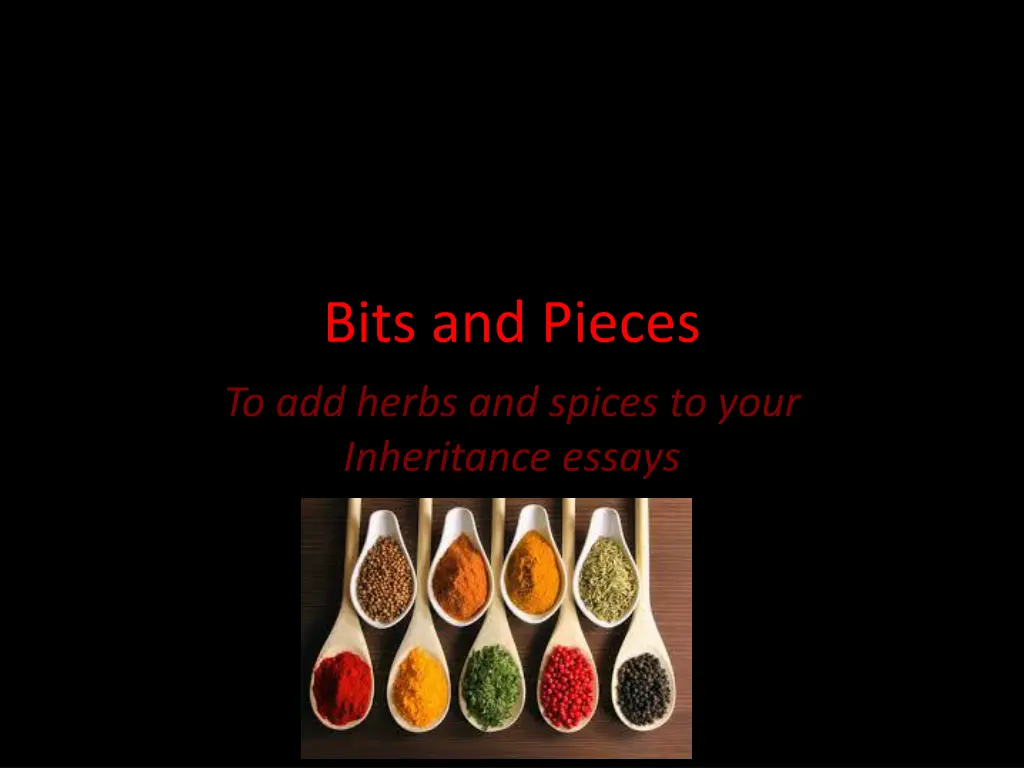
Dramatic Elements in Rayson's Play "Inheritance
Explore the captivating dramatic elements in Rayson's play "Inheritance", including actors addressing the audience, narrative structure, flashbacks, use of humor, and music/sound. Discover how these techniques add depth and richness to the storytelling, making the play a compelling theatrical experience.
Download Presentation

Please find below an Image/Link to download the presentation.
The content on the website is provided AS IS for your information and personal use only. It may not be sold, licensed, or shared on other websites without obtaining consent from the author. If you encounter any issues during the download, it is possible that the publisher has removed the file from their server.
You are allowed to download the files provided on this website for personal or commercial use, subject to the condition that they are used lawfully. All files are the property of their respective owners.
The content on the website is provided AS IS for your information and personal use only. It may not be sold, licensed, or shared on other websites without obtaining consent from the author.
E N D
Presentation Transcript
Bits and Pieces To add herbs and spices to your Inheritance essays
Stagecraft Rayson uses several dramatic conventions in her play, Inheritance: Actors addressing the Audience directly. In Act 1 Scene 1 (pg4) Felix addresses the audience directly. Felix: (addressing the audience) This is my mother, Julia Julia: (addressing the audience) Hi Act 1 Scene 2 (pg5) uses the same convention to introduce Girlie and Dibs. This technique allows important narrative to be told in an effective way. The audience can t help but acknowledge the, Hi by Julia and we are directly involved in the introductions of the characters and therefore the unfolding story.
Narrative Structure Centered on a family reunion. This forms the narrative centrepiece from which all tension is derived and revolves First Act Establishes context and relationships, ends with a crisis Second Act Maureen s ascension, Farley s funeral and the breaking of the family
Narrative Structure Prologue and Epilogue Rayson bookends the play with a prologue and epilogue. How are these different? Non-Linear Narrative Structure Jumps from past to present to future. It s only through dramatic convention that this is possible. Highlights similarities and links between generations of characters. Short-faced paced scenes Adds a film-like quality to the action. Quotations and ideas often linked between scenes
Flashbacks This is a technique often used to bring back characters from the past. This technique provides important narrative and links the past to the present. Illustrates the repetition of events (cyclical continuity between generations of characters) Some characters exist completely within flashbacks: Young/Old Dibs and Girlie Norm Myrtle Lucky Joe Delaney
The Use of Humour Act 2 Sc. 3 Pg 66: What s with all the Nobbys and Dongers Act 1 Sc 16 Pg 26: Norm s monologue about killing the chook. Act 1 Sc. 5 Pg 8: Rolled up newspapers. Rayson appeals to the Aussie larrikin in us all to imagine find humour in these stories. She appeals to our political incorrectness to find humour in the politically incorrect associations of wogs and pooftas through the interactions of the characters.
Use of Music/Sound The Prologue has the song, Two Little Girls in Blue this song foreshadows the plot. Act 1 Scene 20 (p.34-35) A church choir swells, the music dissonant and unhinged. Rayson uses songs to provide important narrative points, but also to create mood and atmosphere. The dramatic ending to Act 1 Scene 20 is heightened by the melody of the Christmas carols. Praise My Soul, the King of Heaven Act 2 Scenes 7&8 are linked by this chorus. Harbour Lights Act 2 Sc 3. Lend a Hand Maureen s rousing campaign song. Send out a Warning, there s trouble in the land .
Symbolism Sitting on the fence Nugget is shown to us sitting on the fence . Representative of him sitting between two worlds his adopted/father s white family on the farm, and his mother s indigenous heritage but not belonging (standing) in either.
Symbolism Pigeons Act 1 Sc 16 Represents the other side of Lyle: gentle and loving (as opposed to the violent Lyle with the whip, etc.) Also symbolic of a connection with/returning to the land (the pigeons always return to the farm it s where they belong) Connection between generations: Norm, Lyle and Brianna.
Symbolism Coin toss Act 1 Sc 26 Symbolises the role of fate in the lives of the characters. Represents destiny vs. duty for Girlie and Dibs.
Symbolism Farley s Hat Picked up by Nugget (Act 2 Sc 13) and Farley appears. Symbolises the connection between father and son.
Symbolism The Stolen Generation Represented through Nugget s story. The loss of his Mother and being taken in by Farley and Dib s (the most Christian people you re ever likely to meet - Act 1 Sc. 22). Christian justifications were often used to justify the stolen generation. Felix s sorry tshirt (Act 1 Sc.23). Nugget can be seen a metaphor of the stolen generation a farmer without a farm . In the epilogue we see Nugget displaced in the city. He has lost his parents, his farm, his land.
Symbolism Christmas Can be a time of great distress for a family, particularly one experiencing hardship or conflict. Norm hangs himself at Christmas. The Father Christmas suit is hidden in a suitcase and never to be spoken about.
Clashes and Conflicts Geography City vs. Country Age Old vs. Young Class Rich vs. Poor Aspirations Duty vs. Freedom Religion Irish Catholic vs. Presbyterian; Christian vs. Muslim Gender Traditional male vs. female roles Race European/Anglo-Australian, Aboriginal, Multi-cultural Sexual Orientation Homosexual vs. Heteronormative
Clashes and Conflicts Many of the tensions and prejudices in the play, particularly from the inhabitants of Rushton (but also present in others), are driven by anything seen as a deviation from the normal . Difference causes someone to be an outsider and unworthy of trust. Difference easily becomes equated with deviancy. The characters who particularly fall victim to this are: Nugget William Felix


